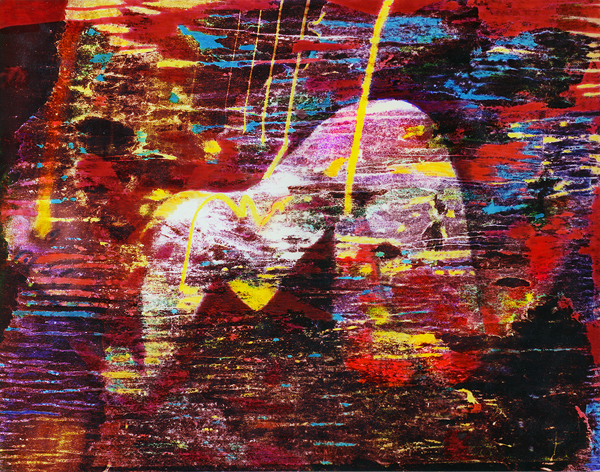Oleg Malevany
 © Oleg Malevany
© Oleg Malevany
About The Artist:
Oleg Malevany ((also spelled Malyovany, b. 1945) engaged in art photography since late 1960-s and was among the founders of the Vremya group in early 1970-s. Unlike most of his groupmates whose photography was involved in social issues, he sought surrealistic and romantic imagery. Malevany's photos were highly appreciated among Kharkiv artistic bohemians. In 1970 – 80-s he was the only photographer in the city who privately sold his artwork – something unheard of in the Soviet Union.
Oleg Malevany's comments on his work:
Overlays
Overlays – two overimposed color slide film frames, similar to double exposure.
Reading between the lines was common practice in the country we used to live in. This technique gave room for multiple interpretations, while formal novelty of the image disguised the ideas behind it, often unacceptable in the Soviet reality and potentially leading to various unsightly consequences. (Unlike writers or even graphic artists, photographers couldn't make art in prison, and we seriously discussed this problem with colleagues). First images were almost arbitrary combinations, later I learned how to combine frames in a more conscious and systematic way. It eventually developed towards more paradoxical images, as if out of a parallel world, towards new pictorial reality. While Boris Mikhailov's works in similar technique aimed at social issues, mine led me away from direct criticism. My images spoke of universal things, like life, love and death.
Collages
Alexandr Suprun (another Vremya group photographer) and I started making collages in the end of 1974. For me the turning point was when I saw the work of a Lithuanian artist Vitaly Butyrin. In most cases this technique requires an idea before one starts shooting: the image must be conceived in the mind before assembling it. The ideas behind my collages were far from the optimistic repertoire, prescribed by the Soviet cliches. A journalist from Moscow once told me that my Gravitation series had foreseen the Chernobyl catastrophe 10 years before it happened.
Burnt Time is the closest I approached to conceptual art in my work at that time. In 1979 a fire in my darkroom harmed or destroyed most of my negative archives. Some of them melted, stuck together or glued to the wrapping paper. It was a shock. Fortunately I didn't throw them away, and 10 years later when after manual restoration I printed some of them, the resulted images became visual representations of the past, the events and the people. A means to overcome the shock of what happened to a decade of my work as well as to overcome the memories of the repressive Soviet time.
Posterizations
Manual printing of posterizations, now a routine Photoshop filter, required complicated technical processes and skilled dexterity in making density separations, but resulted in a freedom of using color and achieving unusual visual effects, creating ‘unphotographic’ reality in a photo.
Oleg Malevany Portfolios 1970s-1980s
We welcome your comments. VASA Exhibitions are the result of various curators, artist, and photographers.